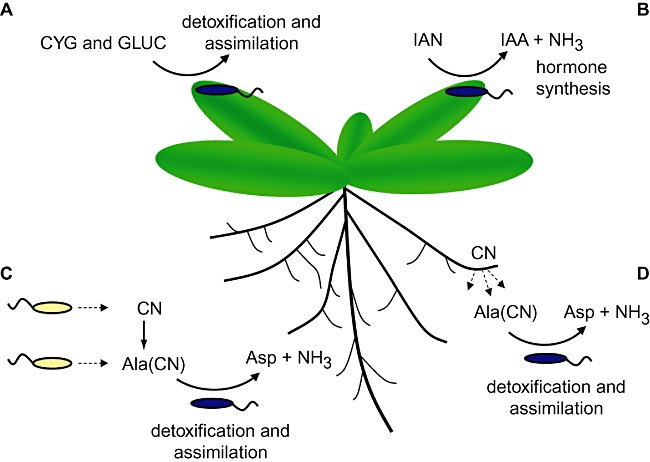Figure 5.

The hydrolysis of nitriles in the plant environment by plant‐associated bacteria. The figure shows four hypothesized roles for bacterial nitrilase enzymes during plant colonization: (A) the hydrolysis of plant nitriles generated during cyanogenic glycoside (CYG) and glucosinolate (GLUC) metabolism, for the purpose of detoxification or assimilation; (B) the hydrolysis of arylacetonitriles such as indole‐3‐acetonitrile (IAN), for the purpose of indole‐3‐acetic acid (IAA) biosynthesis; (C) the detoxification of cyanide (CN) and β‐cyano‐l‐alanine (Ala(CN)) synthesized endogenously or by other microbes, which results in the formation of aspartic acid (Asp) and ammonia (NH3) that can be assimilated as carbon and nitrogen sources; (D) the detoxification and assimilation of CN and Ala(CN) synthesized by plants.
